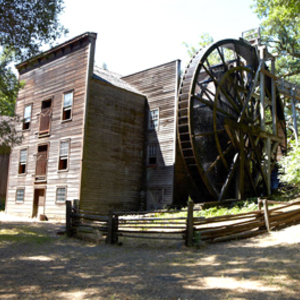
The water-powered Bale Grist Mill, north of St. Helena, California, is a remnant from the first American settlers in the Napa Valley, and still uses the same process to grind grains into flour as it did when it was built in 1846. Now the mill, one of only two water-driven mills remaining west of the Mississippi River, is not only a state historic landmark, run by the California Department of Parks, but it still produces flour in weekly demonstrations, and sells that flour to visitors (many of them chefs). The mill grinds polenta, cornmeal, spelt, buckwheat, rye, and whole-wheat flours—all made from the whole grains with no preservatives and nothing removed.
Farmers once brought their wheat to mill at Bale, where water diverted from the nearby Mill Creek turned the 36-foot water wheel, which then turned the grindstones. The mill served as a community center and meeting place as well, when farmers and their spouses gathered to share news while they waited for their grain to be ground. With the rejuvenation of its operations, and more and more cooks seeking the best stone-ground grains, Bale Grist, once on a list of endangered historic sites, is experiencing a rebirth.
Visitors can also hike from the mill on the historic trail to Bothe-Napa Valley State Park, which features extensive picnic facilities and a number of trails.


